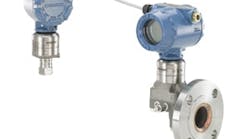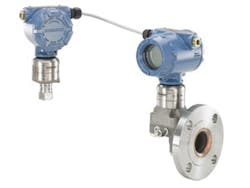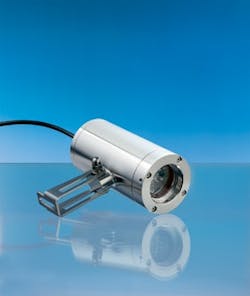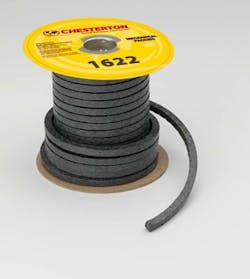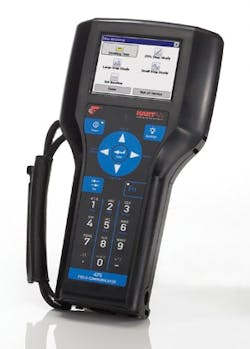Achieving and then maintaining efficient operations always has posed challenges for chemical plants. Today, concerns about the cost and availability of feedstocks, energy and water, as well as initiatives to reduce greenhouse gas emissions and boost sustainability add even greater complexity to the task. Fortunately, plants don't have to grapple with the challenges alone. Vendors continue to introduce innovative offerings that address key issues. This year's Vaaler Awards honor four noteworthy products.
Biennially since 1964, Chemical Processing has bestowed Vaaler Awards on products and services that can significantly improve plant operations and economics. To be eligible for one of this year's awards, a product or service must have been commercialized the United States between May 2009 and June 2011.
The awards are named in honor of John C. Vaaler, editor in chief of Chemical Processing from 1946 to 1961, and chairman of the magazine's editorial board from 1961 until his death in 1963.
Chemical Processing's Editorial Board, which consists of technical professionals with diverse responsibilities and from a variety of industry sectors (see sidebar) assessed 14 entries for technical significance, novelty or uniqueness, and breadth of applicability. This impartial group didn't have to bestow any awards but decided to recognize four products:
• Rosemount 3051S electronic remote sensor (ERS) system from Emerson Process Management;
• LED Ex Luminaire Series 55-EX from L. J. Star;
• 1622 Low Emissions Valve Packing from A. W. Chesterton; and
• ValveLink Mobile software from Emerson Process Management.
Sensor System Obviates Impulse Piping
The Rosemount 3051S ERS system, released in January 2011, is industry's first digital differential-pressure (DP) level architecture. The system, underpinned by more than ten patents, replaces mechanical impulse piping with two 3051S pressure sensors linked together electronically. One of the sensors calculates the differential pressure and transmits the value via a standard two-wire 4–20-mA HART signal. This electronic architecture eliminates temperature-induced measurement drift, improves time response, eases installation and provides multivariable capabilities that can lead to greater process insight.
The ERS technology offers a number of important advantages over traditional installations with extensive impulse piping and capillary. The system provides stable and repeatable measurements while cutting time response by more than 90%. Electrical wire between sensors easily can be installed through floor grates and around hazards. The system obviates heat tracing and purge systems, and the inspections for leaks, plugging, etc. required for impulse lines. Each sensor can be independently serviced and replaced for reduced process downtime. Besides the DP measurement, pressure, including static pressure, read by each sensor can be monitored in real-time.
Moreover, these benefits come without the need to learn new technology. The 3051S system is simply a digital upgrade to proven and well-understood DP level technology
The 3051S ERS system, termed a best practice technology for tall vessels and towers, already has been used with success on various applications, including holding tanks, reactors, distillation columns and fermentation vessels. The technology can be installed on applications that previously weren't feasible because of recurring performance or maintenance issues.
Luminaire Puts Hazardous Environments in New Light
The L.J. Star Lumiglas Series 55-EX is the first high-power LED sight-glass luminaire suitable for illuminating the interior of a process vessel in a hazardous area. The compact impact- and vibration-resistant luminaire produces light without heat and boasts an operating life of about 50,000 hours. So, it can be used in heat-sensitive processes and harsh environments and in applications demanding exceptional reliability and low maintenance.
Prior to the introduction of the Series 55-EX in March 2010, the only hazardous-area-rated LED luminaires available were lower power, producing little light. The high-power LED luminaire provides high-contrast illumination while lasting about 50 times longer than a traditional halogen bulb.
Maintenance in hazardous areas poses extra demands and costs. Replacing a bulb requires a permit to turn off power to that circuit. Difficult-to-access fittings can make such a replacement even more expensive. So, the extended life of the Series 55-EX can add up to thousands of dollars in savings.
Moreover, the luminaire gives light comparable to a 45-W halogen bulb but only uses 9 W of energy. And, unlike a halogen, it doesn't have a fragile filament. The Series 55-EX emits a directional light source similar to daylight that provides greater ground definition and less eye fatigue than halogens.
The luminaire has a stainless steel housing and is designed for universal application in potentially explosive environments (ATEX gas zones 1 and 2, and dust zones 21 and 22). It can be used to illuminate the interior of tanks, hoppers, silos, agitators and other normally closed vessels and reactors as well as visual flow indicators, pipelines and bioreactors. It is said to be ideal for sterile areas.
Single-Spool Packing Curtails Valve Emissions
1622 Low Emissions Valve packing is designed to minimize emissions of light and heavy hydrocarbons, volatile organic compounds, volatile hazardous air pollutants, steam and most oxidizing chemicals from block valves. Independent tests for compliance with the first-ever packing emissions standard (API 622) showed the packing had an average emissions rate of 12 ppm, exceeding current requirements for the chemical, petrochemical and refining industries.
The simple-to-install single-spool braided packing, commercialized in May 2011, can achieve the performance of two-spool systems and more-expensive die-formed packing sets. Its flexible, metal-reinforced-graphite design suits it for applications at temperatures as high as 1,200°F in steam and 850°F in oxidizing atmospheres, and pressures up to 3,800 psig. The packing can handle 0–14 pH, except in strong oxidizers.
The non-hardening packing won't shrink or absorb moisture. The strands in the packing slide easily over one another in response to gland pressure, creating a secure and reliable seal. Passive corrosion inhibitors provide long-term protection against galvanic corrosion that can cause pitting of valve stems and stuffing boxes, ensuring better sealing performance and longer life. The product is fire safe to API 607 and comes with a five-year warranty that emissions won't exceed 100 ppm.
The packing fits a wide range of block valves and can handle any valve sealing applications where a graphite stem packing is suitable. So, standardizing on it can cut packing inventory, reduce chances of error in packing selection and simplify installation.
Plants can use 1622 packing to comply with U.S. Environmental Protection Agency consent degrees requiring "low leak valve packing technology" to remedy non-complying valves.
Mobile Software Eases Valve Maintenance
ValveLink Mobile software provides the capability to set up, calibrate and troubleshoot Fisher Fieldvue DVC6200 and DVC6000 digital valve controllers using a Field Communicator, personal digital assistant (PDA) or smart phone. It supports HART communications, advanced diagnostics, performance diagnostics and optimized digital valve levels on both lines of controllers.
The application, which was commercialized in December 2009, simplifies access to control valve data and requires no special training. The software affords easy navigation through its flick, zoom-in and zoom-out capabilities. Its modern, intuitive interface makes it easy to streamline control valve maintenance activities and optimize process control operations. Users gain access to existing fieldwork tools and maintenance practices via large touch-screen icons. A touch of an icon allows setting up and calibrating valve assemblies, monitoring status and alerts, stroking a valve, performing a step test, running a valve signature, and viewing and saving diagnostic tests. Data also can be uploaded to the control system for additional evaluation.
ValveLink Mobile integrates easily into current field diagnostic systems and plant work practices. It provides safe and convenient access to hard-to-reach valves using a Bluetooth HART modem.
The software can be downloaded to 375 and 475 Field Communicators via the Easy Upgrade Utility. Because those communicators are intrinsically safe, users can take advantage of the software when working on digital valve controllers located in hazardous areas. It also may be installed on any PDA or smartphone running Windows Mobile 5.0 or newer (but not Windows Phone 7).
THE JUDGES
Vic Edwards, Director of Process Safety, Kvaerner
Tim Frank, associate R&D director, Dow Chemical, Midland, Mich.
Ben Paterson, engineering advisor, Eli Lilly, Indianapolis, Ind.
Roy Sanders, process safety consultant, Lake Charles, La.
Ellen Turner, principal technical service representative, Eastman Chemical, Kingsport, Tenn.
Ben Weinstein, section head modeling and simulation, Procter & Gamble, West Chester, Ohio
Jon Worstell, consultant, Houston
Sheila Yang, principal process engineer, Bayer Technology Service, Berkeley, Calif.
